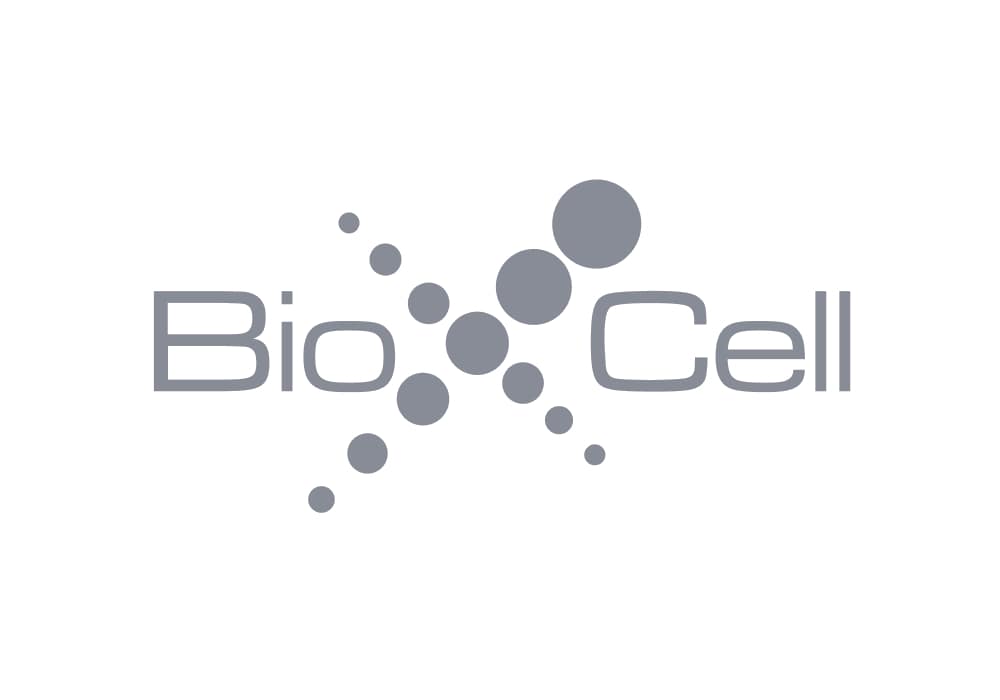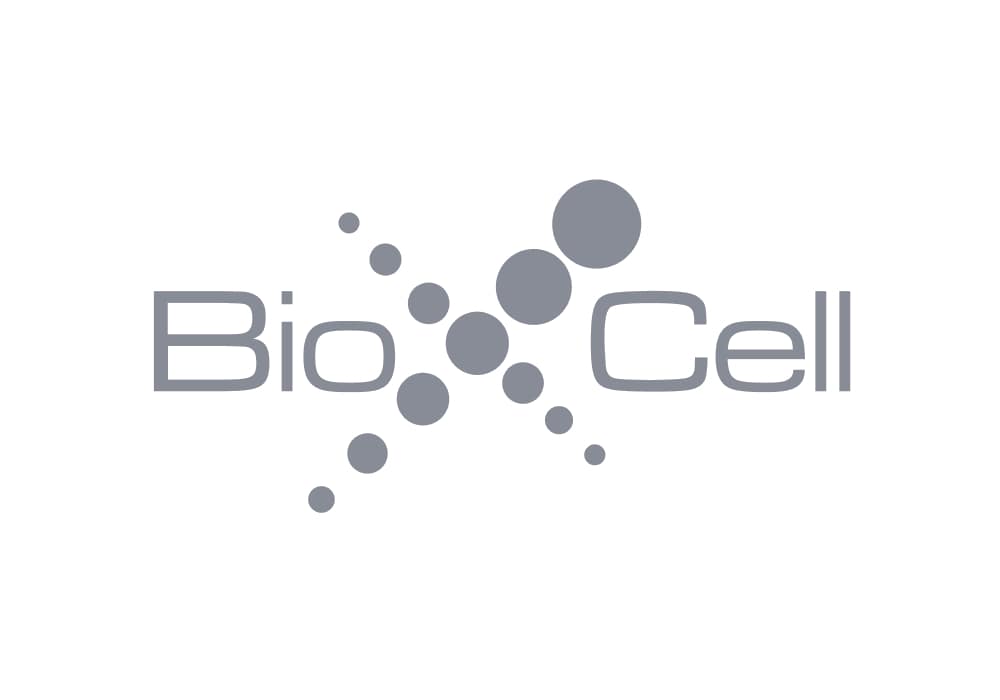InVivoMAb anti-mouse TNFR2 (CD120b)
Product Details
The TR75-54.7 monoclonal antibody reacts with mouse Tumor Necrosis Factor Receptor Type II (TNFR2) also known as CD120b, TNFR type II, and p75. TNFR2 is expressed on many cell types at low levels; upon activation the expression is upregulated. Upon binding either of its two ligands, TNFα or LTα (lymphotoxin alpha) TNFR2 signal transduction leads to a wide spectrum of biological processes including immunoregulation, cell proliferation, differentiation, apoptosis, NF-kB activation, increased expression of proinflammatory genes, antitumor activity, inflammation, anorexia, cachexia, septic shock, hematopoiesis, and viral replication. The TR75-54.7 antibody has been reported to block ligand-induced receptor signaling.Specifications
| Isotype | Armenian hamster IgG |
|---|---|
| Recommended Isotype Control(s) | InVivoMAb polyclonal Armenian hamster IgG |
| Recommended Dilution Buffer | InVivoPure pH 7.0 Dilution Buffer |
| Immunogen | Recombinant mouse TNFR2 |
| Reported Applications |
in vivo TNFR2 blockade in vitro TNFR2 blockade |
| Formulation |
PBS, pH 7.0 Contains no stabilizers or preservatives |
| Endotoxin |
<2EU/mg (<0.002EU/μg) Determined by LAL gel clotting assay |
| Sterility | 0.2 μM filtered |
| Production | Purified from tissue culture supernatant in an animal free facility |
| Purification | Protein G |
| RRID | AB_2687728 |
| Molecular Weight | 150 kDa |
| Storage | The antibody solution should be stored at the stock concentration at 4°C. Do not freeze. |
Recommended Products
in vivo TNFR2 blockade
TNFR2 interposes the proliferative and NF-kappaB-mediated inflammatory response by podocytes to TNF-alpha PubMed
The development of proliferative podocytopathies has been linked to ligation of tumor necrosis factor receptor 2 (TNFR2) expressed on the renal parenchyma; however, the TNFR2-positive cells within the kidney responsible for podocyte injury are unknown. We detected de novo expression of TNFR2 on podocytes before hyperplastic injury in crescentic glomerulonephritis of mice with nephrotoxic nephritis, and in collapsing glomerulopathy of Tg26(HIV/nl) mice, kd/kd mice, and human beings. We further found that serum levels of soluble TNF-alpha and TNFR2 correlated significantly with renal injury in Tg26(HIV/nl) mice. Thus, we asked whether ligand binding of TNFR2 on podocytes ex vivo precipitates the characteristic proliferative and pro-inflammatory diseased podocyte phenotypes. Soluble TNF-alpha activated NF-kappaB and dose-dependently induced podocyte proliferation, marked by the expression of the podocyte G(1) cyclin and NF-kappaB target gene, cyclin D1. Microarray gene and chemokine protein expression profiling showed a marked pro-inflammatory NF-kappaB signature, and activated podocytes secreting CCL2- and CCL5-induced macrophage migration in transwell assays. Neutralization of TNFR2 on podocytes with blocking antibodies abrogated NF-kappaB activation and the induction of cyclin D1 by TNF-alpha, and identified TNFR2 as the primary receptor that induced IkappaBalpha degradation, the initiating event in NF-kappaB activation. These results suggest that TNFR2 expressed on podocytes and its canonical NF-kappaB signaling may directly interpose the compound pathogenic responses by podocytes to TNF-alpha, in the absence of other TNFR2-positive renal cell types in proliferative podocytopathies.
in vitro TNFR2 blockade, in vivo TNFR2 blockade
Shedding of TNF receptor 2 by effector CD8+ T cells by ADAM17 is important for regulating TNF-alpha availability during influenza infection PubMed
Elevated levels of solTNFR2 are observed in a variety of human pathophysiological conditions but regulation of TNFR2 levels during disease is not well understood. We found that solTNFR2 levels were increased following influenza infection or live-attenuated influenza virus challenge in mice and humans, respectively. As influenza-specific CD8(+) T cells up-regulated expression of TNFR2 after infection in mice, we hypothesized that CD8(+) T cells contributed, in part, to solTNFR2 production after influenza infection and were interested in the mechanisms by which CD8(+) T cells regulate TNFR2 shedding. Activation of these cells by TCR stimulation resulted in enhanced shedding of TNFR2 that required actin remodeling and lipid raft formation and was dependent on MAPK/ERK signaling. Furthermore, we identified ADAM17 as the protease responsible for TNFR2 shedding by CD8(+) T cells, with ADAM17 and TNFR2 required in “cis” for shedding to occur. We observed similar activation thresholds for TNF-alpha expression and TNFR2 shedding, suggesting that solTNFR2 functioned, in part, to regulate solTNF-alpha levels. Production of solTNFR2 by activated CD8(+) T cells reduced the availability of solTNF-alpha released by these cells, and TNFR2 blockade during influenza infection in mice enhanced the levels of solTNF-alpha, supporting this hypothesis. Taken together, this study identifies critical cellular mechanisms regulating TNFR2 shedding on CD8(+) T cells and demonstrates that TNFR2 contributes, in part, to the regulation of TNF-alpha levels during infection.
in vivo TNFR2 blockade
Control of GVHD by regulatory T cells depends on TNF produced by T cells and TNFR2 expressed by regulatory T cells PubMed
Therapeutic CD4(+)Foxp3(+) natural regulatory T cells (Tregs) can control experimental graft-versus-host disease (GVHD) after allogeneic hematopoietic stem cell transplantation (allo-HCT) by suppressing conventional T cells (Tconvs). Treg-based therapies are currently tested in clinical trials with promising preliminary results in allo-HCT. Here, we hypothesized that as Tregs are capable of modulating Tconv response, it is likely that the inflammatory environment and particularly donor T cells are also capable of influencing Treg function. Indeed, previous findings in autoimmune diabetes revealed a feedback mechanism that renders Tconvs able to stimulate Tregs by a mechanism that was partially dependent on tumor necrosis factor (TNF). We tested this phenomenon during alloimmune response in our previously described model of GVHD protection using antigen specific Tregs. Using different experimental approaches, we observed that control of GVHD by Tregs was fully abolished by blocking TNF receptor type 2 (TNFR2) or by using TNF-deficient donor T cells or TNFR2-deficient Tregs. Thus, our results show that Tconvs exert a powerful modulatory activity on therapeutic Tregs and clearly demonstrate that the sole defect of TNF production by donor T cells was sufficient to completely abolish the Treg suppressive effect in GVHD. Importantly, our findings expand the understanding of one of the central components of Treg action, the inflammatory context, and support that targeting TNF/TNFR2 interaction represents an opportunity to efficiently modulate alloreactivity in allo-HCT to either exacerbate it for a powerful antileukemic effect or reduce it to control GVHD.
in vivo TNFR2 blockade
TNFR2 Signaling Enhances ILC2 Survival, Function, and Induction of Airway Hyperreactivity PubMed
Group 2 innate lymphoid cells (ILC2s) can initiate pathologic inflammation in allergic asthma by secreting copious amounts of type 2 cytokines, promoting lung eosinophilia and airway hyperreactivity (AHR), a cardinal feature of asthma. We discovered that the TNF/TNFR2 axis is a central immune checkpoint in murine and human ILC2s. ILC2s selectively express TNFR2, and blocking the TNF/TNFR2 axis inhibits survival and cytokine production and reduces ILC2-dependent AHR. The mechanism of action of TNFR2 in ILC2s is through the non-canonical NF-κB pathway as an NF-κB-inducing kinase (NIK) inhibitor blocks the costimulatory effect of TNF-α. Similarly, human ILC2s selectively express TNFR2, and using hILC2s, we show that TNFR2 engagement promotes AHR through a NIK-dependent pathway in alymphoid murine recipients. These findings highlight the role of the TNF/TNFR2 axis in pulmonary ILC2s, suggesting that targeting TNFR2 or relevant signaling is a different strategy for treating patients with ILC2-dependent asthma.
in vivo TNFR2 blockade
Lung IFNAR1(hi) TNFR2(+) cDC2 promotes lung regulatory T cells induction and maintains lung mucosal tolerance at steady state PubMed
The lung is a naturally tolerogenic organ. Lung regulatory T cells (T-regs) control lung mucosal tolerance. Here, we identified a lung IFNAR1(hi)TNFR2(+) conventional DC2 (iR2D2) population that induces T-regs in the lung at steady state. Using conditional knockout mice, adoptive cell transfer, receptor blocking antibodies, and TNFR2 agonist, we showed that iR2D2 is a lung microenvironment-adapted dendritic cell population whose residence depends on the constitutive TNFR2 signaling. IFNβ-IFNAR1 signaling in iR2D2 is necessary and sufficient for T-regs induction in the lung. The Epcam(+)CD45(-) epithelial cells are the sole lung IFNβ producer at the steady state. Surprisingly, iR2D2 is plastic. In a house dust mite model of asthma, iR2D2 generates lung T(H)2 responses. Last, healthy human lungs have a phenotypically similar tolerogenic iR2D2 population, which became pathogenic in lung disease patients. Our findings elucidate lung epithelial cells IFNβ-iR2D2-T-regs axis in controlling lung mucosal tolerance and provide new strategies for therapeutic interventions.


